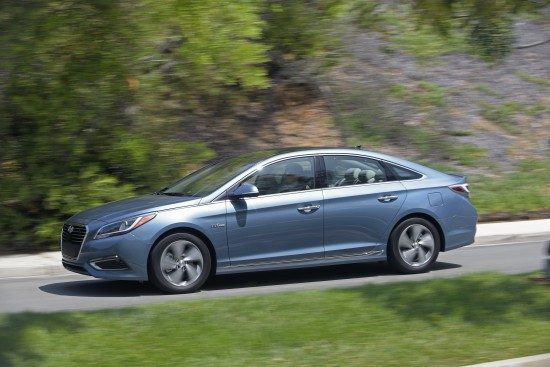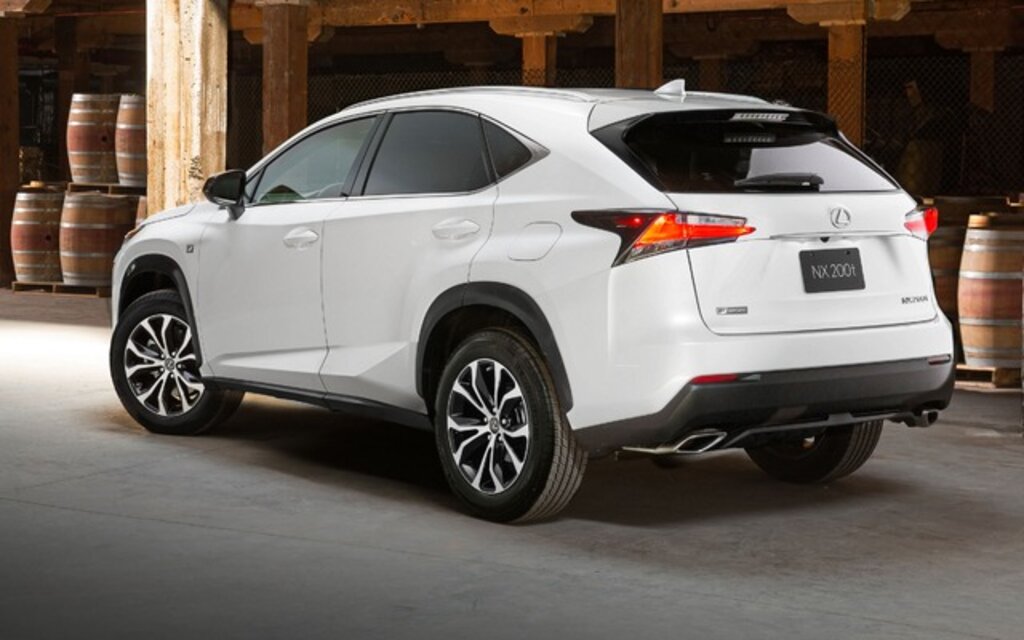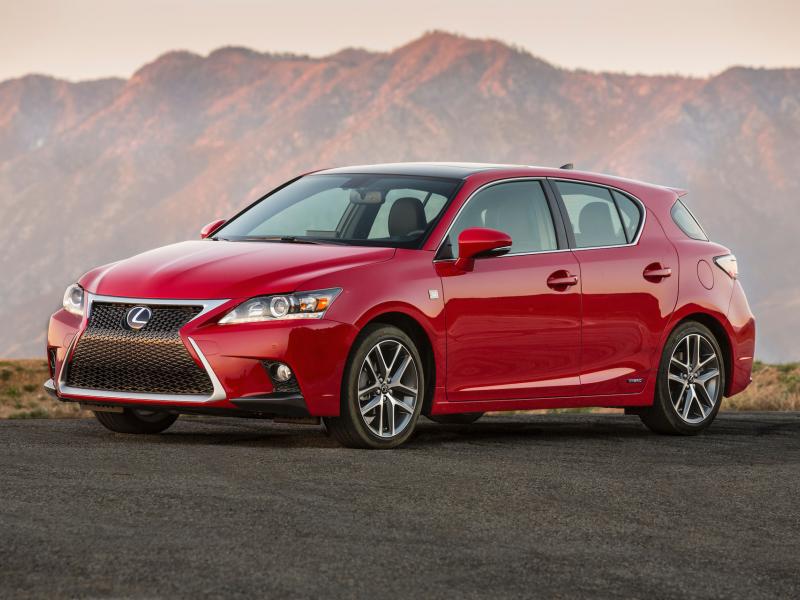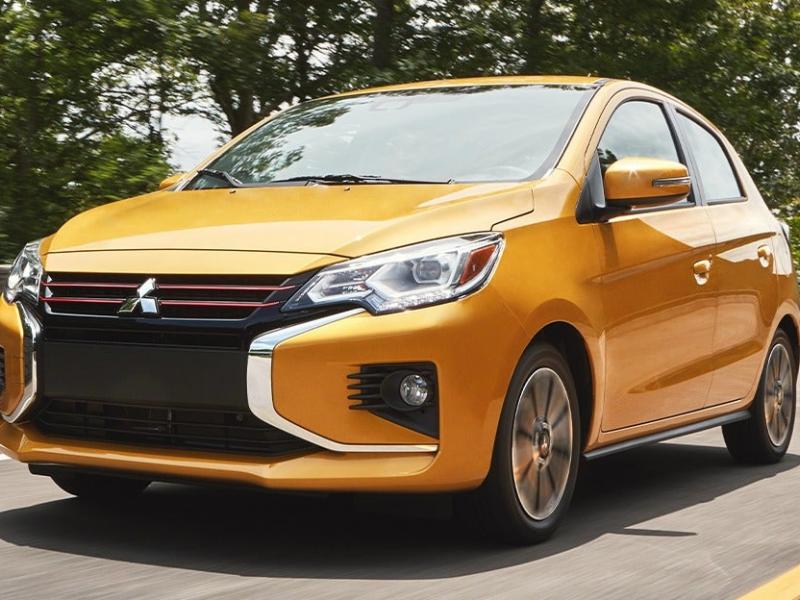In Pursuit of MPG | 2016 Hyundai Sonata Hybrid and Plug-in Hybrid
The 2016 Hyundai Sonata Hybrid is distinguishable by its horizontal-bar grille and unique headlamps.
The instrument panel “Driving Style” gauge read like an investment portfolio: 20 percent “Economical,” 30 percent “Normal” and 50 percent “Aggressive.” But unlike a retirement account, where the results won’t matter for years, the return on decisions at the wheel of the 2016 Hyundai Sonata Hybrid PHEV (Plug-In Hybrid Electric Vehicle) were immediate: 38 miles per gallon.
And that might not even be the better of the two new Sonata hybrids for 2016–the other being the non-plug-in, standard Sonata HEV (Hybrid Electric Vehicle). Both are all-new, building on the seventh-generation Sonata introduced a year ago as a 2015 model.
The hybrids are part of Hyundai’s Blue Drive initiative to be a leader in fuel-efficient, low-emission vehicles, including the 2014 fuel-cell vehicle. The Sonata Hybrid competes with the Ford Fusion Hybrid, Honda Accord Hybrid and Toyota Camry Hybrid, while the Sonata PHEV battles the Fusion Energi and Accord Plug-In Hybrid.
Visually different from the gasoline-powered Sonata, the hybrid models offer horizontal-bar grilles on uplevel and PHEV models (vs. honeycombed grilles on standard models) and a revised rear fascia, along with and a number of drag-reducing elements, seen and unseen, including wheels with smaller openings, active front air flaps, air channels that reduce turbulent flow through wheel wells, and a fully covered undercarriage.
2016 Hyundai Sonata Plug-In Hybrid adds an all-electric range of 24 miles.
Green on the inside, too
Inside, the hybrids are distinguished by a special instrument cluster that deletes the tachometer in favor of a “Vehicle Energy Gauge” and adds the intriguing Driving Style monitor mentioned at the outset. The readout doesn’t directly affect the efficiency, other than to remind the driver and possibly influence his or her driving habits.
2016 Hyundai Sonata Hybrid interior.
Sonata Hybrid comes with aerodynamic wheels.
Thankfully, unlike the previous Sonata Hybrid which stacked batteries behind the rear seat, the 2016 Hybrid’s batteries are packaged below the trunk floor, providing 13.3-cubic-feet of cargo room while also allowing the car to be fitted with a 60/40 split-folding rear seatback to provide additional hauling flexibility. Be aware, however, that additional batteries necessary for the PHEV are still located behind the rear seatback, preventing it from offering the split-folding seat and cutting its cargo room to 9.9 cubic feet. If hauling gear is a priority, you’ll want to stick with the regular hybrid.
Both hybrids are powered by the same 2.0-liter inline four-cylinder direct-injection gas engine, which produces 154 hp and 140-lb-ft of torque, driving the front wheels via a six-speed automatic transmission.
The Sonata Hybrid adds the equivalent of a 51 hp electric motor, punching total output to 193 hp and a listed maximum torque of 150-lb-ft (although Hyundai’s chart show combined peak torque topping 300-lb-ft at just 2,000 rpm). The Plug-in version uses a 118-hp electric motor, pushing horsepower to 202. The EPA estimates the HEV’s fuel economy at 40 mpg city/44 highway/42 combined (39/43/41 for Limited models), while Hyundai estimates the PHEV’s combined number at 40 mpg.
All-electric range for the PHEV is pegged at roughly 24 miles at up to 75 mph from its 9.8-kWh lithium-ion polymer battery pack. Charging time for the PHEV battery is less than 9 hours on regular household voltage, less than 3 hours on 240 volts.

2016 Hyundai Sonata Hybrid
The Sonata’s powertrains proved responsive and smooth, with none of the irritating “on-off-on” pulsating we’ve noted in earlier hybrid models. The chassis feels steady and solid and while road noise was evident, it was not anywhere near annoying. Steering wasn’t particularly communicative, but it was responsive and true without requiring much correction. Seat comfort was good and the clean, easy-to-use interior layout was a pleasure. Rear seat room was surprisingly ample.
If we had to choose…
We’d recommend going with the standard Sonata Hybrid to save weight and provide more cargo capability. Both cars drive similarly, so unless you plan to clock a lot of miles in electric-only mode, you’d be well-served by foregoing the PHEV. That said, Hyundai may have already made the decision for you—the PHEV’s availability will be limited to California, Connecticut, Maine, Maryland, Massachusetts, New Jersey, New York, Oregon, Rhode Island and Vermont starting this fall, and only available by special order after that.
The 2016 Sonata Hybrid goes on sale this summer in all 50 states. Pricing will be announced closer to the on-sale date.




